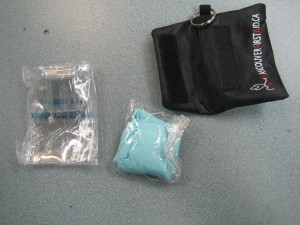
San Francisco CPR is home to the most varied list of training courses for CPR and first aid. We have basic and advanced classes available all week, at the lowest rates in the city. Because we want to make it easy for our potential students, we have a variety of methods available when they want to enroll. For students who want to enroll in training with us, they can:
- Sign up on the San Francisco CPR website. There is an application form that you can fill out 24/7.
- Send an e-mail with your personal details and
- Give us a call or visit during business hours.
Women and cardiac disease
Did you know that out of the total number of deaths in the US due to heart disease, more than half were women? But still a misconception exists that heart problems are a “man’s disease”. Having a cardiac condition is even more dangerous for women, because they experience signs and symptoms differently than men. The most common symptom, chest pain, is actually a late symptom and isn’t commonly experienced by women. The pain women feel in relation to a cardiac problem is usually around the jaw, nape, and upper back – which is why most of them don’t seem medical attention once the symptoms are initially felt.
What happens during a heart attack?
The signs and symptoms of chest and radiating pain are important, because it means that there is a decreased flow of blood to the heart. Without oxygen, the heart muscle starts to “die” causing the pain. A decreased flow of blood can be due to a blockage (due to plaque, platelet formation, scar tissue) or a vasospasm. Vasospasms are infinitely more dangerous, because they are often fatal and manifest no previous symptoms.
What causes a heart attack in the first place?
Cardiac disease is mainly a lifestyle problem, involving our diet, exercise, and other lifestyle choices. Other cardiac disease can arise because of congenital problems, or conditions that have affected a person since birth. Lifestyle characteristics that are considered risk factors for the development of cardiac disease are:
- Diet high in sodium, LDL (low density lipoprotein or “bad” cholesterol), and fat
- Sedentary lifestyle (no exercise, minimal daily activities)
- Vices, especially smoking (Nicotine damages the blood vessels and raises blood pressure
What can I do to stop cardiac disease?
Aside from personally managing your own risk factors, as trained rescuers you should be able to give health teaching when needed. CPR is also an important skill you can use when a person experiences a heart attack. Through the use of compression, ventilation, and defibrillation, you can stabilize a victim before medical help arrives. Simply giving chest compressions is enough to double or even triple the victim’s survival rates.
- BLS – Heartsaver CPR for the general public
- BLS – Heartsaver CPR C (for HCPs)
- BLS – Basic Life Support for HCPs
- ALS – Advanced Cardiac Life Support
- ALS – Pediatric Advanced Life Support
